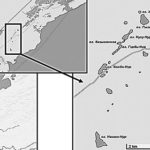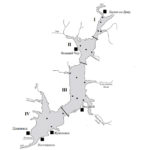UDC 574.583+574.635+550.42(571.55)
Afonina E.Yu., Tashlykova N.A., Zamana L.V., Kuklin A.P., Chechel L.P., Abramova V.A. HYDROCHEMISTRY AND HYDROBIOLOGY OF THE TECHNOGENIC RESERVOIRS OF MINING TERRITORY IN THE SOUTHEASTERN TRANSBAIKALIA // Arid Ecosystems. 2022. Vol. 28. № 4 (93). P. 189-200. | PDF
Water bodies of anthropogenic genesis, as a special component of the technogenic landscape, are characterized by ecological conditions that differ from natural ones. There are limited catchment area, low thickness of bottom sediments, and high content of metals, metalloids and solids. The objects of our study are various lacustrine formations formed during the development of mineral deposits in Eastern Transbaikalia. In present paper, the hydrochemical composition and hydrobiont species diversity and structure have been characterized by technogenic reservoirs of mining territories, different in formation and their purposes. Algae and zooplankton of technogenic water bodies in the arid region are being studied for the first time. The investigated waters of technogenic reservoirs have various morphometric, physical and chemical characteristics with a wide range of pH values (2.99–8.80), total dissolved solids (85.9–9065 mg/l), ore and accompanying elements. By chemical composition, water relates to sulfate and bicarbonate-sulfate one with different ratios of magnesium and calcium. The algal flora and zooplankton species diversity in the studied water bodies is low (75 taxa of plankton algae, 8 taxa of macroalgae, 63 species and subspecies of plankton invertebrates), which is obviously associated with the extreme ecological conditions, where the species richness is a consequence of the influence of physical and chemical conditions of the habitat. The micro- and macro-component composition, total mineralization are the determining factors for the Cryptophyta abundance and biomass and the content of bicarbonates determines the density of Cyanobacteria, Bacillariophyta, Chrysophyta, Charophyta, Chlorophyta, Euglenophyta, Dynophyta. Quantitative indicators of zooplankton are positively related to the concentration of ammonium nitrogen (for Crustacea) and negatively to pH (Rotifera).
Keywords: deposit, technogenic water bodies, hydrochemical composition, phytoplankton, macroalgae, zooplankton.
Financing. The work was carried out within the framework of the state task of fundamental scientific research, state registration no. 121032200070-2.
DOI: 10.24412/1993-3916-2022-4-189-200
EDN: JMGUYF







